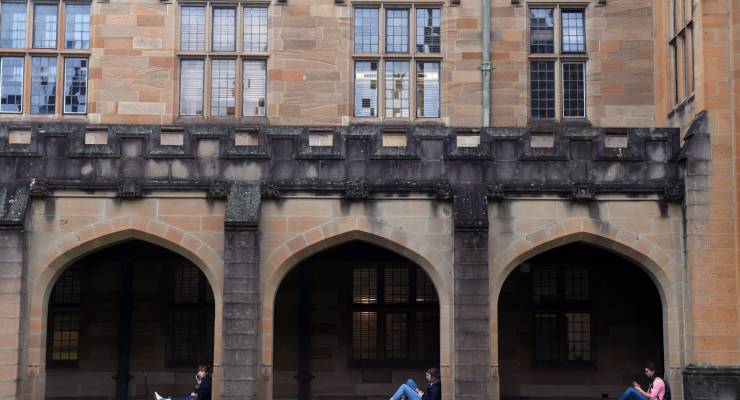
Australia’s troubled international student market is beginning to take shape for 2021 and, whichever way you look at it, it’s disastrous.
Just six short months ago, this sector was worth a bulked up $35 billion — about two-thirds of which is tuition. Now, industry insiders say that globally the market is down by 75%. Given the vicissitudes of the pandemic, this could get worse at any time.
Education agents working in Asia told Crikey, “apart from China, the entire international student market has collapsed”. This includes the most recently promising markets in Latin America where COVID has been particularly bad.
This was already beginning to come out in the numbers for April, May and June where enrolments from India and Nepal dropped sharply.
Recently, China has been relatively unaffected by the pandemic due to ultra-tough early lockdown rules. Students (and their families) are generally wealthier than those from many other countries and the lingering effects of the one-child policy sees Chinese families reliant on a sole candidate for international education.
In a COVID world of significantly higher unemployment, the part-time work opportunities many visiting students need to ameliorate their study costs have evaporated. These students have also been excluded from government COVID relief, making the relative wealth of Chinese students another reason for China’s resilience.
It’s worth remembering that the Australian market was also changing before COVID hit. International student numbers had more or less plateaued at 637,000 at the start of 2020, just a tick up from 628,000 in 2019.
Tellingly, Chinese student numbers were falling for the first time ever between 2019 and 2020 — from 182,000 to 167,000. There was still growth in the number-two market (India) and second-tier contributors such as Nepal and Brazil, but industry insiders understood that it would be difficult to make up for falling Chinese student numbers.
So the relative resilience of the Chinese market — one that industry agents say looks set to remain the strongest for the global education market over the next couple of years — poses an exquisite challenge for the federal government.
Chinese authorities have issued warnings about studying in Australia. These have been tried before and failed, although there is emerging evidence of more nationalism among younger people — the fruits of the CCP propaganda machine’s work for the past eight years under Xi Jinping. Beijing retains the option to ratchet up the pressure.
Australia has some of the world’s harshest border controls not just for offshore visitors but for its own citizens: permission to get out is difficult and tight restrictions at present mean that only 4000 people each week are allowed into the country.
Still, the biggest elephant in the room remains when and how many international students will be let into Australia to begin the 2021 academic year. As of August 24, only 78% of students enrolled in Australian institutions were in the country; the others either cannot or are struggling to get in. New students, at present, have no chance.
There has already been public pushback on plans to bring some students in to the country — mostly due to the Australians who remain trapped offshore, unable to return due to restrictions and the soaring cost of flights. The plans have also not yet been signed off by the federal government. Industry insiders are losing hope.
It’s worth noting that Australia’s Indian envoy Barry O’Farrell recently said that there would be no Indian students coming on the trial flights (if they go ahead). This is due to the dearth of flights out of India into places such as Singapore or Malaysia where flights are likely to originate. Even before the pandemic, there were no direct flights from India to Australia.
Agents say that the UK and Canada are looking like the biggest winners from the crunch of Chinese visas by the US and that county’s coronavirus crisis. But Australia remains attractive on health, safety, overall quality and price in a market where price sensitivity has increased due to the pandemic.
According to the freshly released Times Higher Education Supplement rankings, Australia has more universities in the top 200 than any other country except the United States and the United Kingdom. But Australia continues to struggle to get into the very top tier. Between them, the US and UK hold all but five of the top 30 slots.
Agents say that there is a broad theme of deferment. There’s a general uncertainty over whether the government will relax the borders and a growing unhappiness with online offerings from Australian universities which are not, in too many cases, up to scratch.
Trans-national education courses, where Australian universities offer courses in tandem with sister universities (at present largely in Asian countries such as China, Singapore and Malaysia) are expected to increase in popularity — although both their capacity and appeal will remain limited.
But the view in the sector is that there is only so long people will put their education on hold; many will start to find alternatives that are cheaper and/or closer to home.
The hole that is being punched in Australia’s university system is massive and the time seems fast approaching for the government to reconsider its approach.








Interspersed with some good points, Michael, there are any number of non sequiturs.
True : the education market, from the PRC, had attained it zenith but not entirely for the reasons that you cite. Keeping the explanation short, the difference in salary between a domestic (PRC) degree and an overseas degree is about 1000(Y) per month. A decade ago, when prices were 1/5 of what they are now in the PRC, the differential was in the order of 5000(Y)/month – for the naive; don’t attempt a A$ conversion. One would need to KNOW just what (e.g.) 100Y buys in a small city and in a large city in the PRC.
The academic situation is changing in the PRC. English speaking students are undertaking degrees in medicine (must be fluent in Mandarin) and research degrees in Arts and Science. Xi has created a number of western-lookalike institutions with some teaching in English.
Keep in mind that this “problem” is one of the ALPs (many) creations. Had Hawke keep tertiary funding “as is” there would not be the problem. Frankly, I’m delighted. The ad-hockery and term contracts in regard to employment of junior teaching staff will come to an end; university reserves notwithstanding.
You are also assuming that a degree (of some sort) is actually worth something. The pandemic will see to that. In general, students leave university about a literate as when they entered. There are a plethora of good to-the-point courses offered on line and many by universities that are household names. A reputable certificate in (e.g.) Data Science and sufficient to obtain an interview can be obtained for under US $75. Tack on Byzantine Art and a course in Ethics and a near-enough degree is yours for change from US$ 200.
Singing our praises doesn’t take us anywhere mate. Millennials are nothing if not price-conscious. Some of the Millennials are employers and there #1 question is “will you fit in” (i.e. a “good fit”)? Quals. are secondary; frankly about 3rd or 4th. The market has changed and is changing radically. Quite apart from the funding etc. are the needs of industry.
Anyone would be justified in asking “just how did universities get to be a production line for industry”. It is a fair question because as recently(?) as 40 odd years ago “top” universities did not consider themselves as having a teaching (much less a training) role.
It was predicted when unis. began riding the dollar dragon that it would be a disaster to try to dismount.
I think unis basically just rose to meet and profit from the demand. Why was their an increase in demand? Perception of education as a route to a better job, more in the sense of having a “ticket” , rather than any useful skills learned at an institution of “higher learning”. When I did HSC all those years ago we had 15 year 12 (form 6) students in a school of more than 600 kids. Times really have changed.